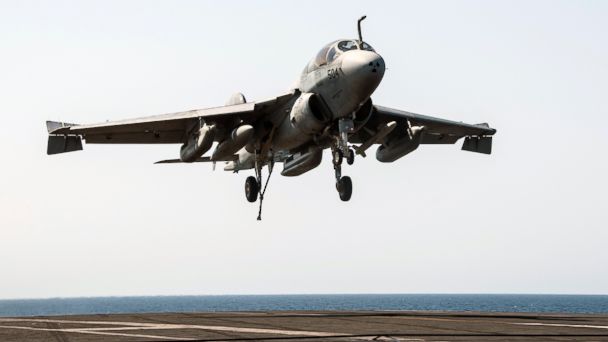5 Simple Questions About the Syria Strikes

U.S. Navy/AP Photo
The airstrikes by the US and its allies against ISIS in war-torn Syria leave many questions to be answered. We put five simple ones to ABC News contributor Steve Ganyard, a former deputy assistant secretary of state and a retired Marine Corps colonel.
1] This week the United States has been conducting airstrikes against ISIS targets inside Syria. What do we know about what has been targeted? Are the targets concentrated in one area inside Syria?
SG: As the week goes on there seem to more targets being hit in Iraq than in Syria. The targets inside Syria are in the north and east of the country, the areas held by ISIS, especially around the city of Raqqua. The types of targets seem to be pieces of military equipment such as tanks.
2] What was the goal of these strikes? Do we know if they are working?
SG: The goal of the strikes in Syria is to degrade ISIS's conventional military capability so that they cannot threaten Iraq. We can track the amount of military equipment that is destroyed as a way to estimate ISIS's military capabilities.
3] The situation in Syria is complicated. ISIS is both an enemy of the United States and the Syrian regime, which the U.S. does not support to say the least. In fact President Obama has called for Bashar al-Assad to step down and thought airstrikes against the regime were in order following alleged chemical weapons attacks. So does the United States targeting ISIS inside Syria actually help the Syrian regime?
SG: The unintended consequence of striking at ISIS in Syria is that it will decrease pressure on Assad. The president has made the decision that degrading ISIS's ability to threaten Iraq is more important at this point. The administration hopes, however, that more moderate groups opposing Assad will be strengthened by the weakening of ISIS.
4] The United States also targeted the "Khorasan Group" right? What was our goal there?
SG: It's important to make the distinction between Khorasan and ISIS. Khorasan is a terrorist group, an offshoot of al Qaeda, that was plotting attacks against the West. The intelligence community has been tracking this new group for a few months and was concerned that press reports about their existence would drive Khorasan underground, making them more difficult to attack. Their cell is in Syria and so the decision was made to attack Khorasan at the same time as ISIS. But the two groups, while both Islamists, have very different goals, structures and intent.
5] So, what is the endgame here? How long should we expect these strikes inside Syria to continue?
SG: There is no foreseeable endgame. That said, as ISIS's military capability is degraded over time, the number of strikes in Syria will decrease. But in Iraq it will be up to the Iraqi ground forces to eject ISIS. US airpower will assist the Iraqis but the president has made it clear that he has no intention of putting US ground forces back into Iraq.